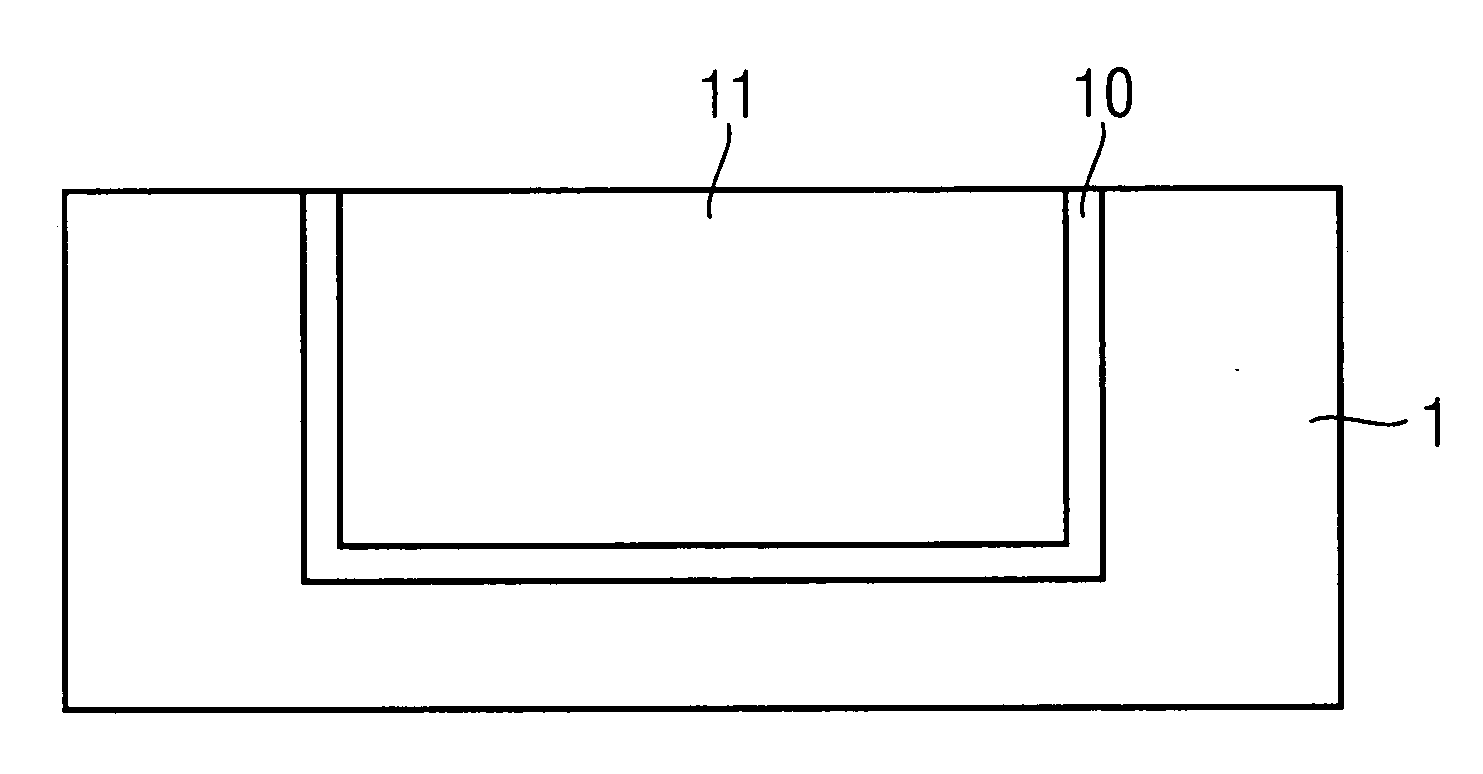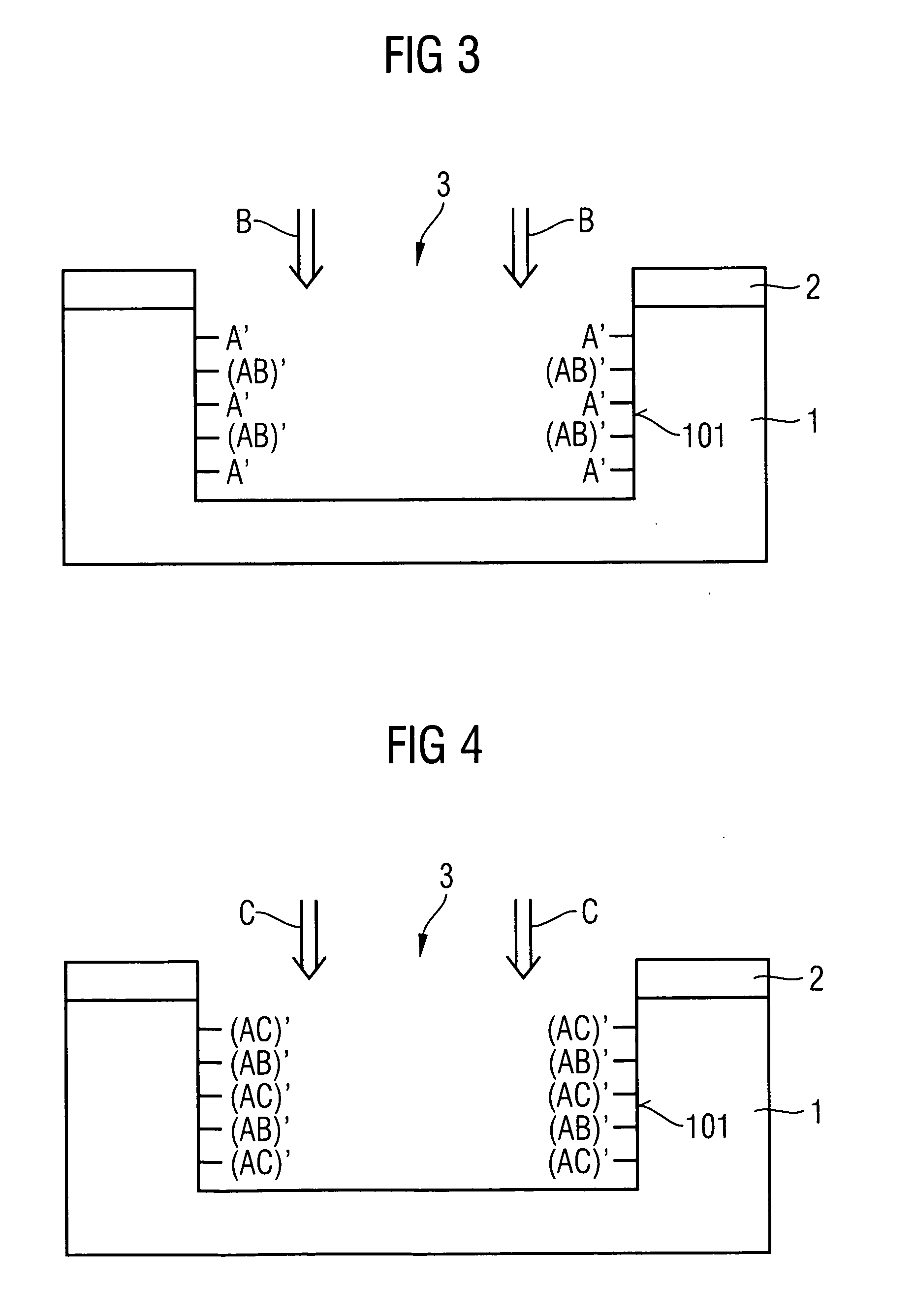Automatic layer deposition process
a layer deposition process and automatic technology, applied in chemical vapor deposition coatings, coatings, capacitors, etc., can solve the problems of only achieving complete coverage of the surface in the trench region, unacceptably long time, etc., to achieve low vapour pressure, reduce effective sticking coefficient, and high sticking coefficient
- Summary
- Abstract
- Description
- Claims
- Application Information
AI Technical Summary
Benefits of technology
Problems solved by technology
Method used
Image
Examples
Embodiment Construction
[0022]FIG. 1 illustrates a semiconductor substrate 1, for example made from silicon. A capping layer 2 of silicon oxide, silicon nitride or other passivating materials has been deposited thereon. A trench 3 has been formed through the capping layer 2 and into the substrate 1. Contrary to the geometry illustrated in FIG. 1, this trench may also have a very high aspect ratio, i.e. the depth of the trench is higher by a multiple than the width of the trench. In 90 nanometre technology, trenches with a depth of from 6 to 9 μm and an aspect ratio of 1:80 are typically produced. A thin layer with a thickness of just a few nanometres is to be deposited in the trench. In the text which follows, by way of example, the deposition of a thin layer of a dielectric material is described; however, it is also possible for metal layers with a high conductivity to be deposited in a similar way.
[0023] In a first step, a first reaction gas, referred to below as precursor A, is introduced into a reacti...
PUM
| Property | Measurement | Unit |
|---|---|---|
| depth | aaaaa | aaaaa |
| depth | aaaaa | aaaaa |
| aspect ratio | aaaaa | aaaaa |
Abstract
Description
Claims
Application Information
 Login to View More
Login to View More - R&D
- Intellectual Property
- Life Sciences
- Materials
- Tech Scout
- Unparalleled Data Quality
- Higher Quality Content
- 60% Fewer Hallucinations
Browse by: Latest US Patents, China's latest patents, Technical Efficacy Thesaurus, Application Domain, Technology Topic, Popular Technical Reports.
© 2025 PatSnap. All rights reserved.Legal|Privacy policy|Modern Slavery Act Transparency Statement|Sitemap|About US| Contact US: help@patsnap.com



